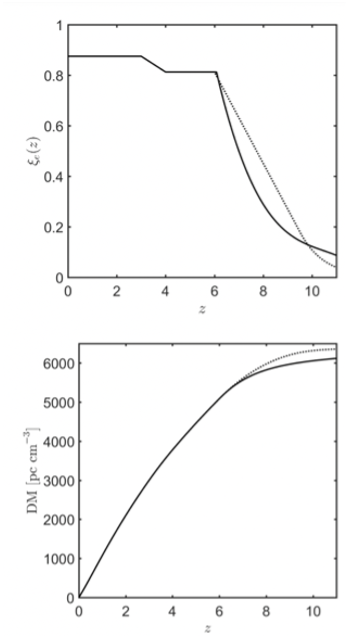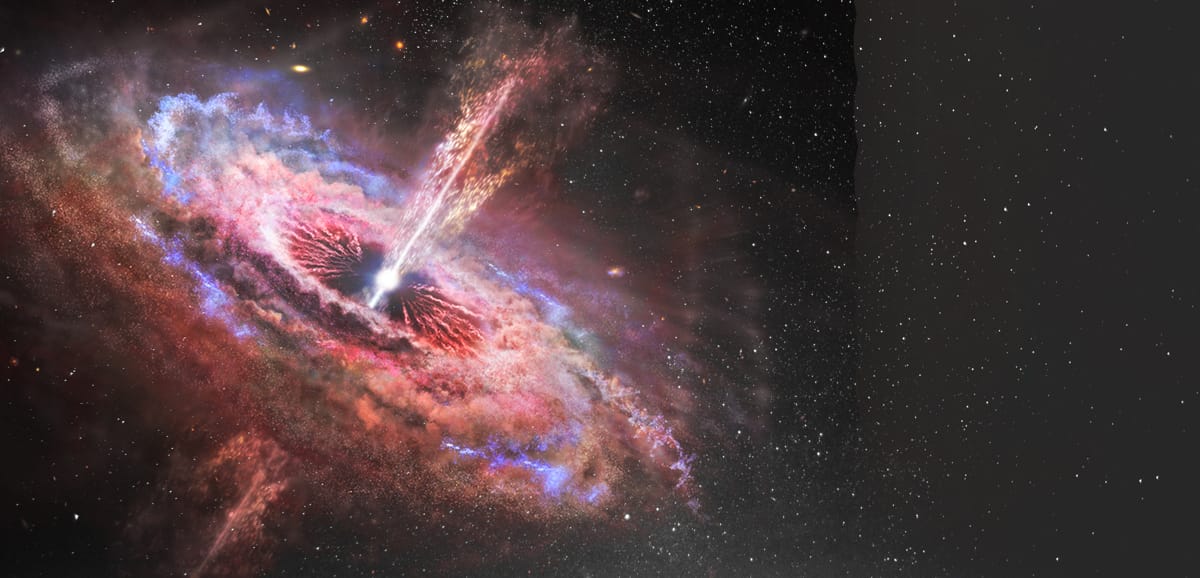Immediately after the big bang, the Universe was filled with extremely dense and hot ionized gas. As the universe expanded and cooled, electrons, protons and neutrons became less energetic and for the first time were able to combine to form neutral atoms. This era which took place only 380,000 years after the big bang and is known as the era of recombination, also marked the first time in the Universe’s history at which light was able to travel freely through space. However, at this point in the Universe’s history, there was little light to speak of. Only a few hundred million years later, as dense clouds of gas collapsed into the first stars, light was finally being created in abundance. The higher frequency UV light created by these first stars split hydrogen atoms back into electrons and protons, in a process known as ionization. As the electrons and protons were already separated from each other earlier in the evolution of the Universe (before the recombination era), this stage of the Universe is known in cosmology as “the era of reionization”. Reionization presents one of the few means by which we can (indirectly) study the conditions in the Universe very early on and the properties of the earliest stars that lived in it. However, the details of when exactly reionization occurred and how it proceeded over time and space thereafter, are still poorly constrained by data.

Fast Radio Bursts (FRBs) are brief (typically lasting a few milliseconds), very bright radio pulses arriving at Earth from billions of light-years away. The FRB field is relatively new (with the first detection taking place in 2007) and many properties of FRBs are still a topic of active investigation. Nonetheless, their connection to highly magnetized neutron stars – ‘magnetars’ was vividly established in April of 2020, when a known magnetar source in our own Galaxy, was observed to produce such a burst. Magnetars are known to be a common by-product of the collapse of massive stars (see work by Dr. Beniamini and collaborators), which in turn are thought to be a major contributor to the Universe’s reionization as mentioned above. Indeed, the conditions taking place in the early Universe are likely to make the extremely strong magnetic fields needed to power magnetars even easier to attain. Furthermore, some gamma-ray bursts, are known to take place during this era, and the creation of their jets almost definitely requires enormous magnetic fields. The existence of magnetars in the Early Universe, combined with the great abundance of FRBs (which are created at a rate of about 10,000 per day over the entire sky, several thousands of times more common than, for example, gamma ray bursts), and the relative ease of detecting them from large distances, make FRBs excellent probes of cosmology. On top of this, for each FRB, astronomers get a measurement of the “dispersion measure”, a quantity which reflects the number of ionized electrons in a column between the FRB source and us, and which for remote FRBs, can illuminate the properties of the intervening intergalactic medium, which is not readily observed by other means.

In a work from 2021, Dr. Beniamini and collaborators have shown that the distribution of “dispersion measures” of FRBs from the early Universe holds great potential towards exploring the era of reionization. One aspect they explore, makes use of the fact that due to the reionization of the Universe taking place at a finite time, there is a maximum limit (which depends on the reionization history) to the column of ionized electrons that can lie between us and an FRB source (if the FRB is very distant, then the FRB signal was created before the Universe was fully reionized and the burst travelled a portion of its journey towards us through mostly neutral material). The research outlines three different methods, using either FRBs with known or unknown host galaxies which can be used to measure the Universe’s reionization history. FRBs have the potential to become the most accurate source of information about the era of reionization in a matter of several years.





